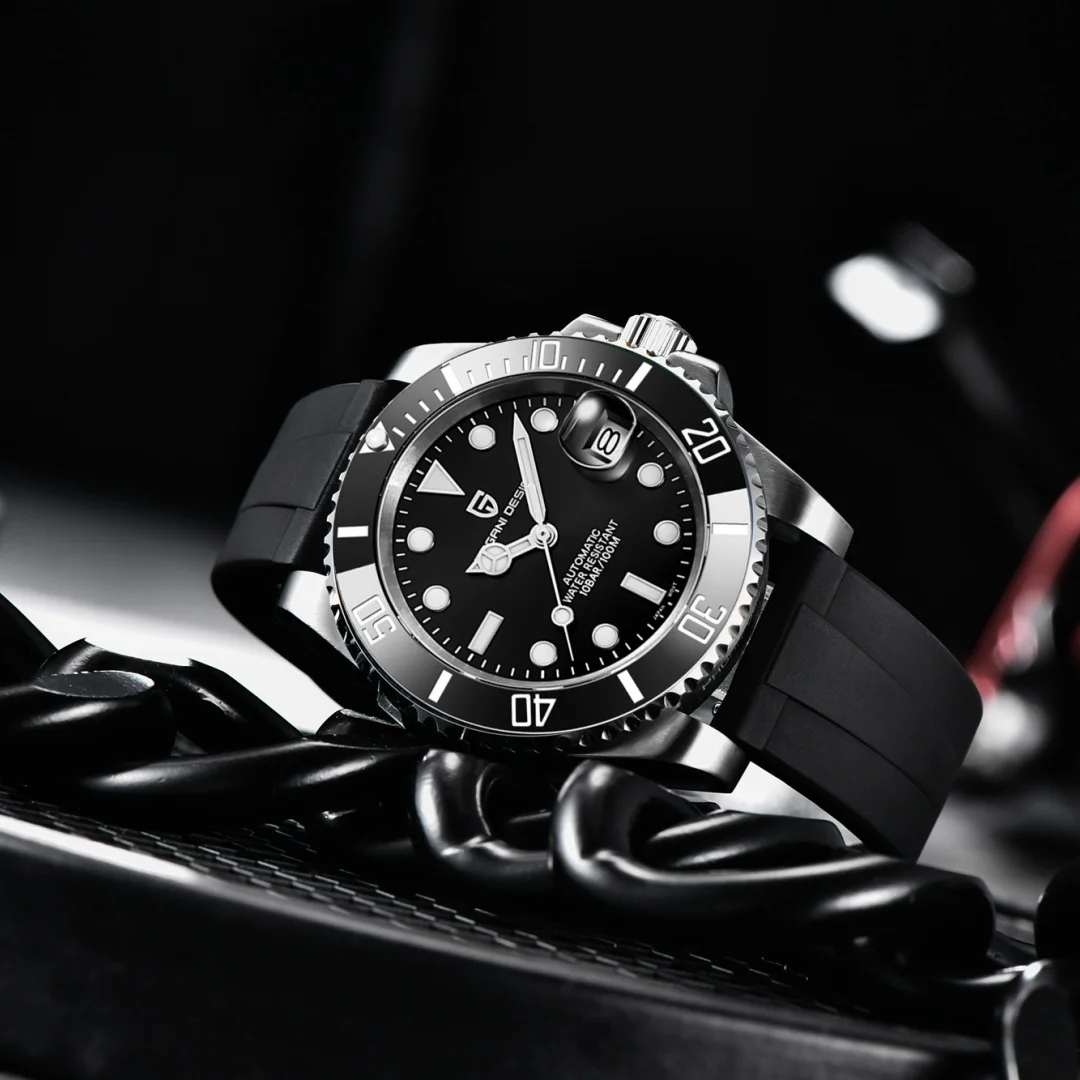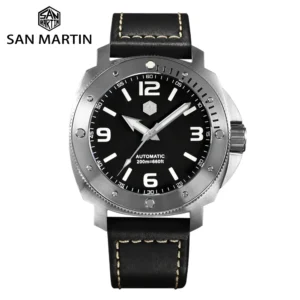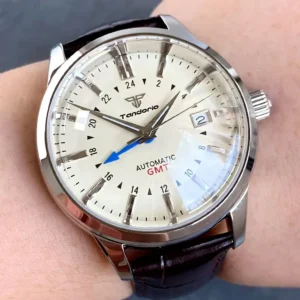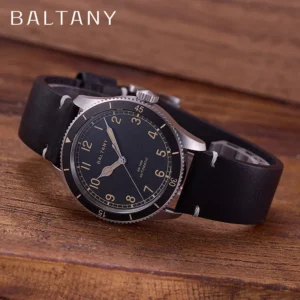Understanding Why a Dedicated Watch Is Essential for Outdoor Activities
When venturing into the great outdoors, having the right gear can make all the difference between an enjoyable adventure and a challenging ordeal. Among these essential tools, a dedicated outdoor watch stands out as a critical companion that offers far more than simple timekeeping.
An outdoor-specific watch differs fundamentally from general-purpose timepieces in several key ways. While standard watches focus primarily on style and basic time functions, outdoor watches are purposefully engineered to withstand harsh conditions while providing specialized features that support wilderness activities.
The benefits of wearing a dedicated outdoor watch include:
- Safety redundancy – When your smartphone battery dies or loses signal, your watch becomes a critical navigation backup
- Environmental monitoring – Many outdoor watches provide real-time data on weather changes, altitude, and barometric pressure
- Activity optimization – Specialized metrics help you pace yourself and monitor exertion levels
- Emergency assistance – Features like location sharing and SOS signals can prove life-saving in critical situations
Statistics show that approximately 65% of wilderness rescues involving lost hikers benefit from GPS technology, with dedicated outdoor watches providing an average of 18 hours more battery life in cold conditions compared to smartphones. This difference can be crucial when temperatures drop below freezing, as most smartphones experience severe battery degradation while specialized outdoor watches maintain functionality.
Modern outdoor watches have evolved dramatically from the simple compasses and altimeters of previous generations. Today’s models integrate sophisticated satellite navigation, environmental sensors, and health monitoring into rugged watch cases for outdoor adventures that withstand extreme conditions. These multi-functional tools have become indispensable for anyone who takes their outdoor pursuits seriously.
Critical Watch Features That Matter for Outdoor Enthusiasts
Selecting the perfect outdoor watch requires understanding which features truly matter for your specific activities. Different outdoor pursuits demand different capabilities, and recognizing these requirements helps narrow down the overwhelming array of options available.
Every outdoor watch represents a series of engineering trade-offs. Increased functionality often comes at the expense of battery life, while enhanced durability typically adds weight. Understanding these inherent compromises is essential when determining which features deserve priority for your adventures.
The most sophisticated outdoor watches can range from $300 to well over $1,000, with price generally correlating to the breadth and depth of features. However, identifying which capabilities actually enhance your specific activities allows for more targeted and potentially cost-effective selections.
The outdoor-ready watch cases features most critical for wilderness use include specific construction elements that ensure reliability when conventional support systems are unavailable. In the following sections, we’ll break down these essential features by category to help identify which deserve your attention based on your outdoor activities.
Navigation & Location Tools: Finding Your Way in the Wild
Modern outdoor watches offer impressive navigation capabilities that can literally save your life when traditional methods fail. Understanding the differences between various positioning technologies helps identify which will perform best in your typical environments.
GPS (Global Positioning System) technology forms the foundation of most outdoor watch navigation features, but significant variations exist in implementation:
- Multi-band GPS receives signals across multiple frequencies, improving accuracy in challenging environments like deep canyons or dense forests
- Dual frequency reception enhances position calculation by comparing timing differences across frequencies
- Multi-constellation support allows watches to connect with different satellite networks simultaneously:
- GPS (American) – The original and most widely used system
- GLONASS (Russian) – Offers better high-latitude coverage, beneficial for polar expeditions
- Galileo (European) – Provides higher precision in urban environments
- BeiDou (Chinese) – Offers strong coverage across Asia-Pacific regions
The practical impact of these technologies becomes evident when comparing accuracy measurements. In open fields, standard GPS typically achieves 3-5 meter accuracy, while multi-band systems can achieve 1-2 meter precision. In challenging environments like dense forests, standard systems may drift to 10+ meters of error while advanced systems maintain 3-5 meter accuracy.
Mapping capabilities vary significantly between watches, with high-end models offering:
* Detailed topographic displays showing elevation contours
* Vector maps that scale smoothly at different zoom levels
* Downloadable regional maps for offline use
For altitude measurement, barometric altimeters provide more precise readings than GPS-based calculations alone, typically offering accuracy within 3 meters when properly calibrated versus 10-15 meters for GPS-only altitude estimation.
Many outdoor enthusiasts choose GMT automatic watches for their navigational advantages, including the ability to track multiple time zones during international expeditions or maintain home time while adjusting to local time during travel.
Durability Standards: Withstanding Nature’s Challenges
When facing unpredictable wilderness conditions, your watch’s durability becomes paramount. The materials and construction standards directly determine whether your timepiece will survive the journey or fail when needed most.
Material choices significantly impact long-term reliability:
* Sapphire crystal offers superior scratch resistance compared to mineral glass or Gorilla Glass, rating 9 on the Mohs hardness scale versus 5-7 for alternatives
* Titanium cases provide strength comparable to stainless steel at roughly half the weight, plus superior corrosion resistance
* Ceramic bezels resist scratches better than aluminum or steel versions but may be more prone to cracking under direct impact
Many outdoor watches reference military testing standards, particularly MIL-STD-810, which includes tests for:
* Shock resistance (dropping from specified heights onto hard surfaces)
* Temperature extremes (functioning in ranges from -40°F to 140°F)
* Humidity exposure (operating in 95% humidity for extended periods)
* Sand and dust ingress protection
* Freeze/thaw cycles to test for water expansion damage
Water resistance ratings often cause confusion. Here’s what they actually mean:
* 50m/5ATM: Suitable for swimming but not diving
* 100m/10ATM: Appropriate for snorkeling and water sports
* 200m/20ATM: Safe for recreational scuba diving
* 300m+/30ATM+: Professional dive watch standard
The practical implications of understanding durability factors in rugged watches become particularly apparent when facing extreme conditions. For instance, watches with inadequate cold-weather ratings may experience battery failure or display issues when temperatures drop below freezing, while properly rated models maintain full functionality.
Battery Performance: Power When You Need It Most
Battery life represents one of the most critical considerations for outdoor watches, as charging opportunities may be severely limited during extended adventures. Understanding realistic performance expectations helps avoid unexpected power loss in critical situations.
Typical battery performance varies dramatically across watch categories:
* Basic ABC watches (Altimeter, Barometer, Compass): 1-2 years on a standard battery
* GPS watches in regular time mode: 14-28 days
* GPS watches with active tracking: 8-40 hours depending on tracking frequency
* Smartwatches with full features activated: 1-7 days
Solar charging capabilities can significantly extend operational duration, with high-end models capable of indefinite operation in time-only mode with sufficient sun exposure. However, it’s important to understand that even the best solar watches require approximately 3-4 hours of direct sunlight to generate one day’s worth of GPS tracking power.
Cold weather dramatically affects battery performance, with most watches losing 20-40% of battery capacity at temperatures below 32°F (0°C). Some specialized models incorporate insulation or heating elements to mitigate this issue.
Practical battery management strategies include:
* Using expedition or ultratrax modes that reduce GPS sampling frequency
* Disabling unnecessary sensors and connectivity features
* Switching to monochrome displays when color isn’t essential
* Carrying lightweight solar chargers for extended expeditions
Health & Performance Metrics: Understanding Your Body’s Response
Modern outdoor watches offer sophisticated health and performance tracking that helps optimize activity while identifying potential issues before they become serious problems.
Heart rate monitoring technologies vary significantly in accuracy:
* Optical wrist-based sensors: Generally accurate within 5-10 beats per minute during moderate activity, but may lose accuracy during intense exercise or cold conditions
* Chest strap monitors: Typically accurate within 1-2 beats per minute across most activity levels, but require wearing an additional device
Pulse oximeter (blood oxygen saturation) measurements become particularly valuable at high altitudes, where readings below 90% may indicate the need for acclimatization or descent. This feature has proven valuable for mountaineers monitoring their adaptation to elevation.
Performance metrics commonly available include:
* VO2 max estimation – Providing insight into cardiovascular fitness levels
* Training load calculation – Helping prevent overtraining by quantifying accumulated strain
* Recovery time recommendations – Suggesting appropriate rest periods based on activity intensity
* Specialized metrics for different activities (running dynamics, stroke rate for swimmers)
Sleep tracking functionality helps monitor recovery between adventure days, with advanced watches capable of identifying sleep stages and providing quality scores that correlate with readiness for subsequent activities.
Smart Features & Connectivity: Staying Connected (When You Want To)
While disconnecting represents a core appeal of wilderness experiences for many, strategic connectivity can enhance both safety and enjoyment. Understanding connectivity options helps determine which features provide genuine value versus unnecessary distractions.
Key connectivity considerations include:
* Smartphone notifications – Allowing selective alerts without constant phone access
* Weather forecasting – Providing updated predictions when within connectivity range
* Emergency assistance – Offering location sharing and distress signals
* Navigation updates – Downloading route changes or condition alerts
Most outdoor watches support emergency features through connected smartphones, though some high-end models incorporate standalone cellular connectivity that functions independently. The practical limitation is cellular network availability, which remains inconsistent in remote wilderness areas.
Music storage capabilities vary widely, with premium models offering 8-32GB of storage for offline playback through Bluetooth headphones, eliminating the need to carry a separate device for motivation during challenging sections.
Contactless payment features prove surprisingly useful during multi-day adventures that cross through small towns, allowing secure transactions without carrying additional cards or cash.
Types of Outdoor Watches and Their Ideal Uses
The outdoor watch market divides into several distinct categories, each representing different design philosophies and capability priorities. Understanding these fundamental approaches helps narrow options before diving into specific models.

The price spectrum generally aligns with feature complexity, with traditional ABC watches starting around $150-300, mid-range GPS models from $300-500, and premium multisport GPS watches ranging from $500-1,000+. However, each category offers distinct advantages that may prove more valuable than raw feature count depending on your specific needs.
Adventure-Focused GPS Multisport Watches
Adventure-focused GPS watches represent the most comprehensive outdoor timepieces available, offering extensive navigation capabilities combined with detailed activity tracking across multiple sports. These watches excel in providing detailed data while maintaining reasonable battery life through sophisticated power management.
Core strengths of this category include:
* Comprehensive mapping with topographic details and points of interest
* Multi-week battery life in watch mode, 10-40 hours with active GPS tracking
* Advanced navigation features including turn-by-turn directions and off-route alerts
* Detailed training metrics for performance optimization
* Extensive customization options for data screens and features
These watches typically allow users to create activity-specific profiles that display only relevant data fields, simplifying operation during different pursuits. For example, a hiking profile might emphasize navigation data, while a running profile focuses on pace and heart rate zones.
Automatic field military watches often share design elements with these adventure timepieces, emphasizing reliability and readability in challenging conditions, though typically with mechanical rather than electronic functionality.
The primary limitations of this category include:
* Larger size and weight compared to simpler options
* Steeper learning curves due to extensive feature sets
* Premium pricing reflecting advanced capabilities
* Potential feature overwhelm for casual users
Rugged Smartwatches with Outdoor Capabilities
Rugged smartwatches bridge the gap between everyday wearables and dedicated outdoor tools, offering reasonable performance in both roles. These watches emphasize versatility while incorporating sufficient durability and sensor technology to support weekend adventures.
The distinguishing features of outdoor-focused smartwatches include:
* Enhanced durability compared to standard smartwatches (higher water resistance, reinforced construction)
* Basic to moderate navigation capabilities (typically breadcrumb trails rather than detailed maps)
* Extended battery modes that trade functionality for longevity during adventures
* Comprehensive smartphone integration for notifications and app connectivity
* Touch screen interfaces supplemented by physical buttons for wet/gloved operation
The app ecosystem represents a significant advantage, with specialized applications available for activities ranging from golf to surfing. This extensibility allows the watch to adapt to evolving interests without hardware replacement.
Many watches in this category incorporate tactical features in automatic wristwatches that enhance their outdoor utility, including night visibility, silent operation modes, and reinforced construction.
Primary limitations include:
* Significantly shorter battery life than dedicated outdoor watches (typically 1-5 days)
* Less accurate sensors than specialized outdoor models
* Reduced durability compared to purpose-built adventure watches
* Connectivity dependency for many advanced features
Traditional ABC (Altimeter, Barometer, Compass) Watches
ABC watches represent the original outdoor timepiece category, focusing on essential navigation tools while maximizing reliability and battery life. These watches emphasize simplicity and durability over extensive features, making them particularly well-suited for harsh environments and extended expeditions.
Key strengths of traditional ABC watches include:
* Exceptional battery life measured in months or years rather than days
* Superior reliability in extreme conditions due to simplified electronics
* Focused functionality without distracting features
* Generally more compact and lightweight design
* Lower learning curve with straightforward operation
Many ABC watches incorporate shock resistance features specifically engineered for outdoor activities, allowing them to withstand impacts that would damage more complex timepieces. This durability makes them particularly well-suited for activities like rock climbing or mountaineering where impacts are common.
The primary limitations include:
* Minimal or no GPS capabilities
* Limited or absent activity tracking features
* Basic displays with less information density
* Fewer smart features and connectivity options
ABC watches typically demonstrate superior reliability in extreme conditions, with operational temperature ranges often exceeding those of more complex watches. This reliability makes them popular among professionals operating in remote environments where device failure is not an option.
Matching Watch Types to Specific Outdoor Activities
Different outdoor pursuits place unique demands on watches, requiring specific features while making others less relevant. Understanding these activity-specific requirements helps identify the optimal timepiece for your preferred adventures.
Professional guides and outdoor athletes often select watches based on their primary activities, with some maintaining multiple specialized timepieces for different pursuits. However, versatile options exist for enthusiasts engaging in diverse outdoor activities who prefer a single reliable companion.
Hiking & Backpacking: Navigation-Forward Options
Hikers and backpackers typically prioritize navigation capabilities, reliable battery performance, and environmental sensors that enhance safety during trail adventures. The specific requirements evolve based on trip duration and terrain complexity.
For day hiking in familiar areas, essential features include:
* Basic navigation with track recording and backtracking capability
* Accurate altimeter for elevation tracking and location confirmation
* Weather trend monitoring through barometric pressure
* 8-10 hours of active GPS battery life
Multi-day backpacking journeys in remote areas demand more comprehensive capabilities:
* Detailed topographic mapping with waypoint management
* Extended battery life (multiple days of GPS tracking)
* Power-saving navigation modes
* Weather prediction through barometric trend analysis
* Sunrise/sunset timing for camp planning
Navigation accuracy becomes particularly crucial in challenging environments like dense forests, where GPS signal quality can vary significantly between watch models. High-performance receivers maintain accuracy within 3-5 meters even under dense canopy, while basic models may drift by 10+ meters, potentially placing you on the wrong side of a ravine or waterway on your map.
Barometric altimeters provide essential redundancy for location confirmation, as comparing your measured altitude with map contour lines can verify position when visual landmarks are unavailable. This cross-reference capability has proven particularly valuable in fog or dense forest conditions.
Trail Running & Ultra Endurance: Lightweight Performance Trackers
Trail runners prioritize lightweight construction, accurate performance metrics, and sufficient but not excessive navigation capabilities. The balance shifts further toward battery longevity and reliability for ultra-distance events.
Essential features for trail running watches include:
* Accurate distance and pace tracking on variable terrain
* Lightweight, comfortable design that doesn’t bounce during movement
* Quick-access lap marking for interval training
* Readable display under varied lighting conditions
* Basic navigation with route following and track-back features
Ultra-distance events introduce additional requirements:
* Extended battery life capable of covering event duration (potentially 24+ hours)
* Efficient power management modes
* Reliable performance in changing weather conditions
* Customizable alerts for nutrition and hydration timing
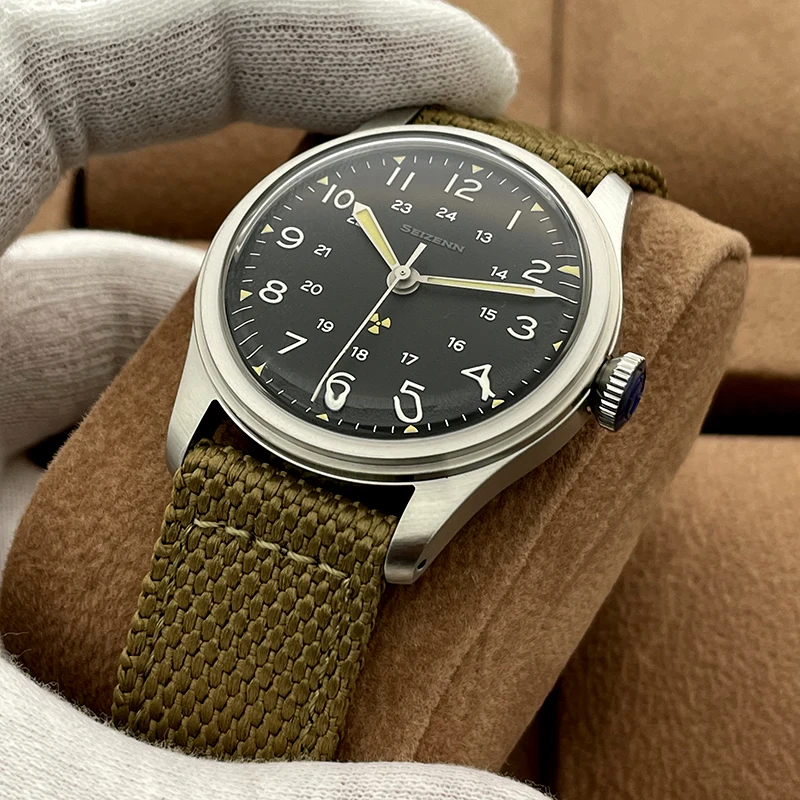
Many trail runners select rugged automatic watches for their combination of durability and reliable functionality without battery concerns, particularly for everyday training where GPS tracking may be unnecessary.
The weight difference between watch categories becomes particularly noticeable during running, with lightweight options (1.2-2.5 oz) causing significantly less fatigue over long distances compared to heavier alternatives (3-5 oz). This difference may seem minor but compounds with each arm swing over thousands of strides.
Mountain Sports: Climbing & Alpine Activities
Mountain environments create unique challenges for watches, requiring specialized features to handle extreme conditions, elevation changes, and safety concerns. Both climbers and alpinists benefit from watches specifically designed for vertical pursuits.
Critical features for mountain activities include:
* Exceptional altimeter accuracy for route finding and progress tracking
* Barometric sensors for storm prediction and weather monitoring
* Cold-weather battery performance optimization
* Robust construction to withstand impacts against rock
* Glove-compatible buttons or touch interface
Alpine environments expose watches to particularly challenging conditions, including:
* Rapid temperature fluctuations (potentially 30-40°F shifts within hours)
* Extreme cold that impacts battery chemistry and display function
* Intense UV exposure that can degrade materials and affect displays
* Low pressure at altitude affecting barometric sensors
Titanium automatic watches offer significant advantages for mountaineering, as they provide excellent strength-to-weight ratio while resisting corrosion from sweat and environmental exposure. Their reduced weight compared to stainless steel models (typically 30-40% lighter) proves valuable during extended ascents where every ounce matters.
Altitude-specific health monitoring becomes increasingly important above 8,000 feet, where oxygen saturation measurements help identify acclimatization issues before they become symptomatic. Watches with this capability allow climbers to make more informed decisions about ascent rates and rest days.
Water-Based Adventures: Diving, Paddling & Surfing
Water activities present unique challenges for watches, requiring specific design considerations to maintain functionality during immersion while providing activity-relevant data. Different water pursuits benefit from specialized features tailored to their particular demands.
For diving activities, essential features include:
* Water resistance rated to at least 100m/10ATM for recreational diving, 200m+ for technical diving
* Dedicated dive modes with depth tracking and bottom time monitoring
* Clear display visibility underwater with strong backlighting
* Dive log capabilities for recording profiles
* Reliable button operation under pressure (touchscreens typically don’t function underwater)
Paddlers and surface water enthusiasts benefit from different priorities:
* Stroke cadence and rate measurements for performance tracking
* GPS functionality for route recording and navigation on open water
* Wave/tide information for coastal activities
* Quick-drying band materials that won’t retain water
Professional spec dive watches provide specialized functionality for underwater exploration, often incorporating features like helium escape valves for saturation diving and enhanced luminescence for low-light conditions.
Water resistance ratings deserve particular attention for these activities, as dynamic pressure from swimming or water entry can effectively double the static pressure at a given depth. This means a watch rated for 50m may actually only withstand surface swimming, while serious water sports require 100m+ ratings for reliable performance.
Military Inspired Automatic Watches, Rugged Automatic Watches, Tactical Automatic Watches
Price range: $852.14 through $994.60 Select options This product has multiple variants. The options may be chosen on the product pageClassic Automatic Dress Watches, GMT Automatic Watches, GMT Pilot Watches
Price range: $1,240.86 through $1,463.33 Select options This product has multiple variants. The options may be chosen on the product pageBronze Automatic Watches, Military Inspired Automatic Watches, Professional Spec Dive Watches
Price range: $1,442.21 through $1,442.82 Select options This product has multiple variants. The options may be chosen on the product pageProfessional Spec Dive Watches, Titanium Automatic Watches
$574.74 Select options This product has multiple variants. The options may be chosen on the product pageClassic Automatic Dress Watches, GMT Automatic Watches, GMT Dive Watches
Price range: $468.93 through $552.94 Select options This product has multiple variants. The options may be chosen on the product pageClassic Pilot Watches, Military Inspired Automatic Watches
$561.00 Select options This product has multiple variants. The options may be chosen on the product page
How to Choose Your Ideal Outdoor Watch: A Strategic Approach
Selecting the perfect outdoor watch becomes significantly easier with a structured decision process that aligns your specific needs with available options. Following these steps helps narrow the overwhelming variety of choices to find your ideal match.
Identify your primary activities
Begin by determining which outdoor pursuits you engage in most frequently and which place the most demanding requirements on a watch. These primary activities should drive your core feature requirements.Establish must-have features
Based on your primary activities, identify the non-negotiable features that your watch must include. For hikers, this might be topographic mapping; for divers, depth tracking and exceptional water resistance.Determine your battery life requirements
Realistically assess how long you’ll be away from charging opportunities during typical adventures. Add a 30% buffer to this estimate to account for unexpected extensions or battery degradation over time.Set your budget range
Establish both your ideal and maximum budget, recognizing that the most advanced features typically command premium prices. Consider the watch as an investment in both safety and enjoyment.Evaluate physical compatibility
Consider your wrist size, preferred weight, and readability requirements. Watches that feel comfortable during brief try-ons may become irritating during extended activities.
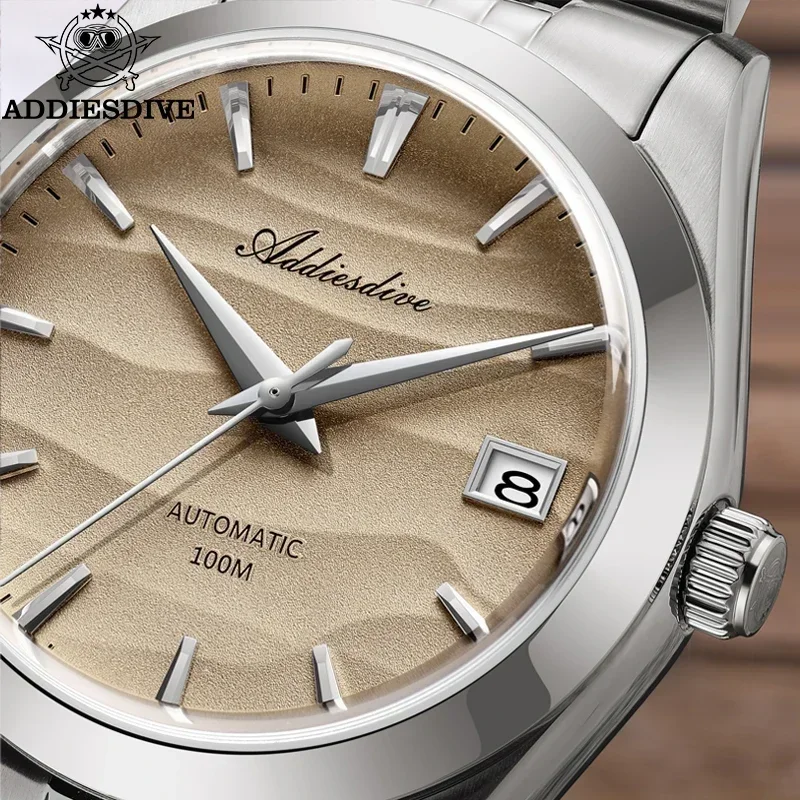
Research durability standards
Investigate the rugged watches for extreme conditions that match your environmental exposures, paying particular attention to temperature ranges, impact resistance, and water protection appropriate for your activities.Consider ecosystem compatibility
If you already use specific fitness or outdoor apps, check compatibility with watch options to ensure seamless data integration rather than fragmented information across multiple platforms.Acknowledge inevitable trade-offs
Recognize that no watch excels in every category. The most feature-rich options sacrifice battery life; the most durable models add weight; the most affordable options limit capabilities. Identify which compromises you can accept.
Essential Accessories & Companion Tools for Outdoor Watches
Maximizing your watch’s utility often involves supplementary items that enhance protection, comfort, or functionality. These accessories can address inherent limitations or adapt your watch for specific conditions.
Physical protection options help preserve your investment in challenging environments:
* Tempered glass screen protectors prevent scratches while maintaining touch sensitivity
* Silicone or TPU bumper cases absorb impacts that might otherwise damage watch cases
* Reinforced watch straps with secondary security clasps prevent loss during activities
Strap alternatives allow adaptation to different conditions and activities:
* Nylon NATO straps provide security through redundant attachment points
* Silicone bands offer comfortable water resistance for aquatic activities
* Extension straps accommodate wear over insulating layers or wetsuits
* Quick-release mechanisms facilitate rapid changes between styles
The best materials for outdoor watch cases combine durability with appropriate weight for specific activities. Titanium offers excellent strength-to-weight ratio but at premium cost, while reinforced polymers provide exceptional impact resistance at lower price points.
External sensors can significantly enhance data collection accuracy:
* Chest heart rate monitors improve precision during high-intensity activities
* Foot pods provide accurate pace and distance when GPS signals are compromised
* External temperature sensors eliminate body heat interference for accurate readings
Power solutions for extended trips ensure your watch remains functional throughout your adventure:
* Solar power banks with 5000-10000mAh capacity can recharge most watches multiple times
* Hand-crank emergency chargers provide power when solar options aren’t viable
* Battery life extenders that optimize watch settings based on remaining power
Future Developments in Outdoor Watch Technology
The outdoor watch landscape continues evolving rapidly, with emerging technologies promising to address current limitations while introducing entirely new capabilities. Understanding these trends helps make forward-looking purchase decisions.
Sensor technology advancements show particular promise:
* Non-invasive hydration monitoring through bioimpedance analysis
* Blood glucose tracking without needle pricks
* Core body temperature estimation for heat illness prevention
* Advanced sleep staging with recovery optimization recommendations
Battery innovations appear poised to resolve one of the most significant limitations in current watches:
* Solid-state batteries offering 30-40% higher energy density
* Ambient light harvesting from any light source rather than just direct sunlight
* Kinetic charging systems that generate power from body movement
* Ultra-low-power display technologies that dramatically reduce consumption
Material science developments enhance durability while reducing weight:
* Carbon composite cases combining lightness with exceptional strength
* Sapphire-glass fusion materials offering scratch resistance without brittleness
* Self-healing polymers that recover from minor abrasions
Advanced GMT functions in tool watches continue evolving, with new models incorporating multi-timezone tracking alongside outdoor-specific features, creating increasingly versatile timepieces for international adventurers.
Artificial intelligence integration shows potential for predictive capabilities:
* Route recommendations based on current conditions and personal fitness
* Early warning systems for altitude sickness based on physiological markers
* Adaptive training guidance responding to performance and recovery metrics
Making the Most of Your Investment: Final Considerations
A quality outdoor watch represents a significant investment that can provide years of reliable service when properly selected and maintained. These final considerations help ensure you maximize both value and functionality.
The long-term value equation extends beyond initial purchase price to include:
* Firmware update frequency and duration – leading manufacturers typically support models for 3-5 years with regular enhancements
* Battery replacement options – some models allow user-replaceable batteries while others require professional service
* Repairability factors – availability of replacement parts and service centers
* Resale value retention – premium brands typically maintain stronger value over time
The learning curve for advanced watches deserves consideration, particularly for complex feature sets. Most users require 2-3 weeks of regular use to become proficient with basic functions and 2-3 months to fully utilize advanced capabilities. Manufacturers offering detailed video tutorials generally enable faster mastery.
While technology provides valuable tools, balancing reliance on electronic aids with traditional skills remains prudent. A watch should complement fundamental navigation abilities rather than replace them entirely, as even the most reliable devices can fail. This balanced approach ensures your outdoor watch enhances your wilderness experience rather than creating dependency.
When selected thoughtfully, your outdoor watch becomes an integral part of a comprehensive approach to outdoor safety and enjoyment. By understanding the essential features that matter for your specific activities and applying a strategic selection process, you’ll find a reliable companion that enhances every adventure for years to come.

